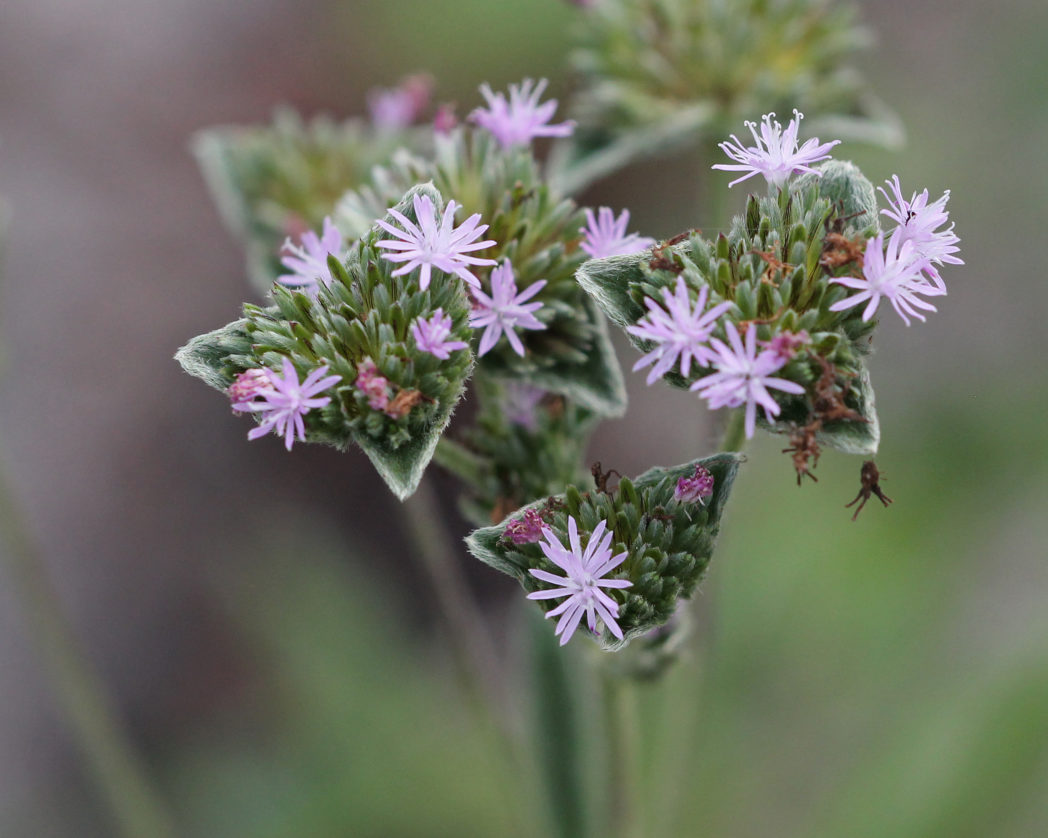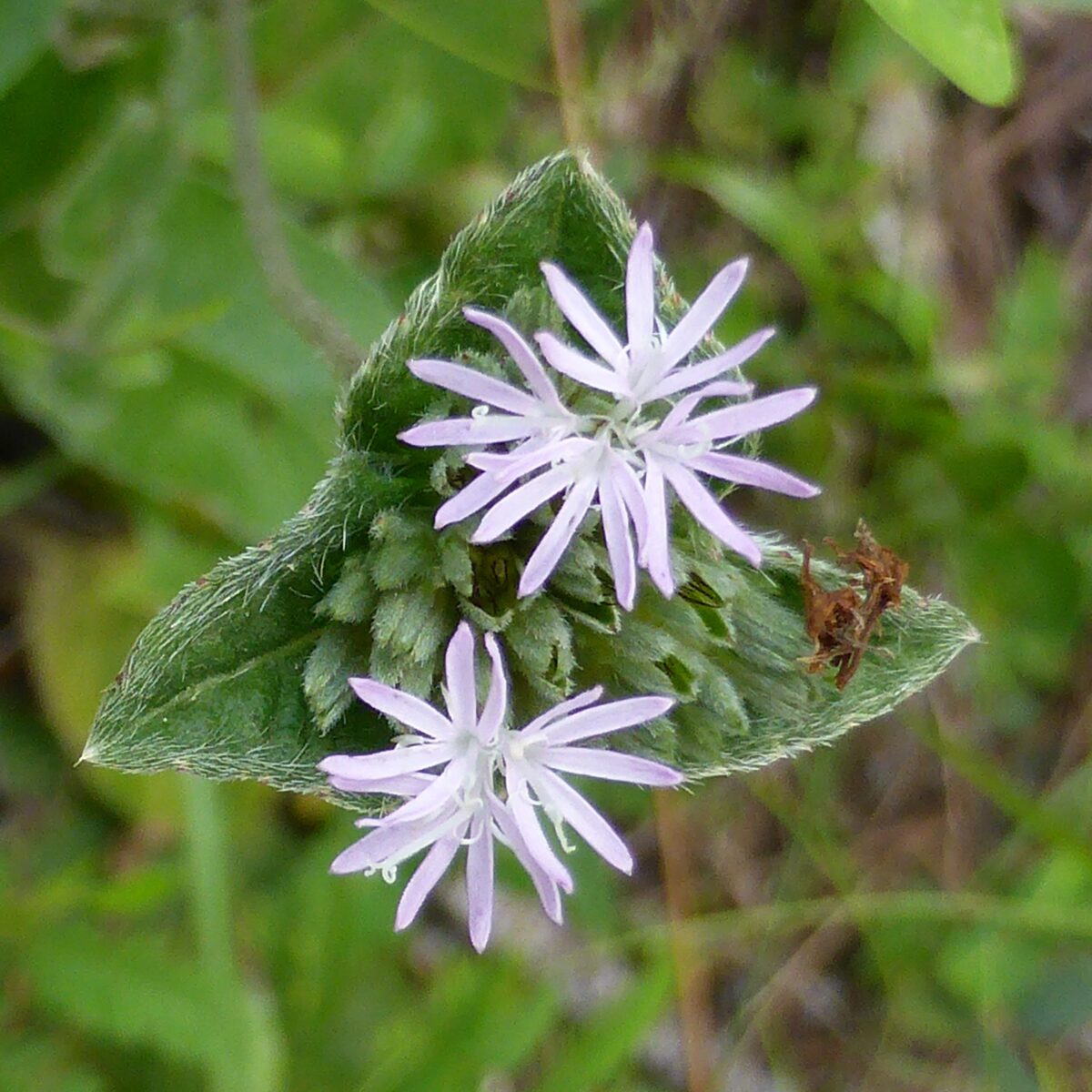Tall elephantsfoot
Pictured above: Tall elephantsfoot (Elephantopus elatus) by Mary Keim. Click on terms for botanical definitions. View post as a PDF.
You’d probably expect an elephant-sized flower from a plant called Tall elephantsfoot (Elephantopus elatus), but it’s not the flower that gives this plant its name. It’s the large rosette of flat basal leaves that, with a bit of imagination, bear a tiny resemblance to the shape of an elephant’s footprint. The plant occurs naturally in flatwoods, sandhills, upland mixed woodlands, ruderal areas and wet prairies. Its small flowers typically bloom summer through fall and attract a variety of pollinators, especially native bees.
Although Tall elephantsfoot is a member of the Aster family, its flowers bear no ray florets. The small disk florets may be lavender, pink or even whitish. Flowerheads are subtended by three leaf-like bracts that are hairy and deltoid in shape. Stems are hairy and erect, emerging from a basal rosette of flat oblanceolate leaves. Stem leaves are few, elliptic and sessile with alternate arrangement. The abundance of hairs on much of the foliage gives it a grayish hue. Fruits are specialized achenes called cypselae.
The genus Elephantopus comes from the Greek elephantos, or “elephant,” and pous, or “foot.” The species epithet elatus comes from the Latin elat, or “raised,” hence the common name, Tall elephantsfoot. Both the scientific and common names are a reference to the flat basal leaves from which the tall flower stalk arises.
The plant may have cytotoxic properties due to the presence of two chemicals specific to the genus — elephantin and elephantopin.
Family: Asteraceae (Composite or daisy family)
Native range: Nearly throughout Florida
To see where natural populations of Tall elephantsfoot have been vouchered, visit florida.plantatlas.usf.edu.
Lifespan: Perennial
Soil: Slightly moist to very dry, sandy soils
Exposure: Full sun to shade
Growth habit: 2–3’+ tall
Propagation: Seeds
Florida regions of landscape suitability: North, Central, South
Garden tips: Tall elephantsfoot does well in a naturalized meadow but can also be a nice addition to a more formal wildflower garden.
Tall elephantsfoot may be available at nurseries that specialize in native plants. Visit PlantRealFlorida.org to find a native nursery in your area.
Learn more about Tall elephantsfoot from the Florida Native Plant Society and the Institute for Regional Conservation.


